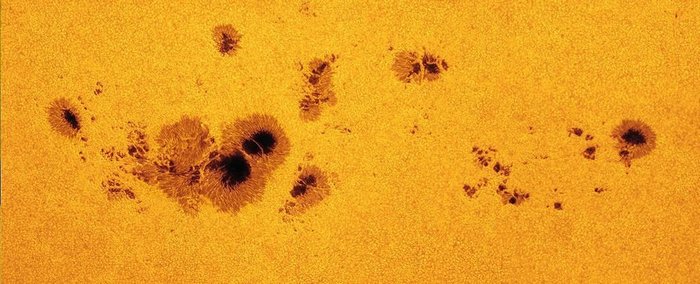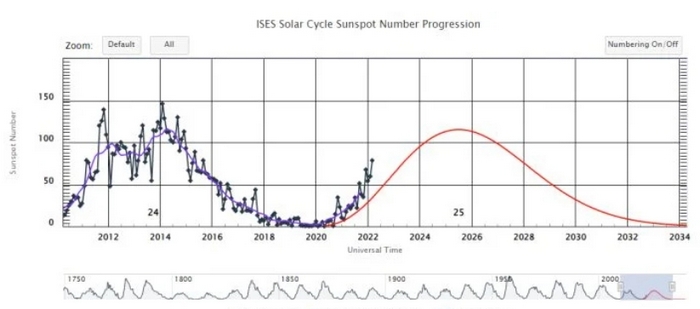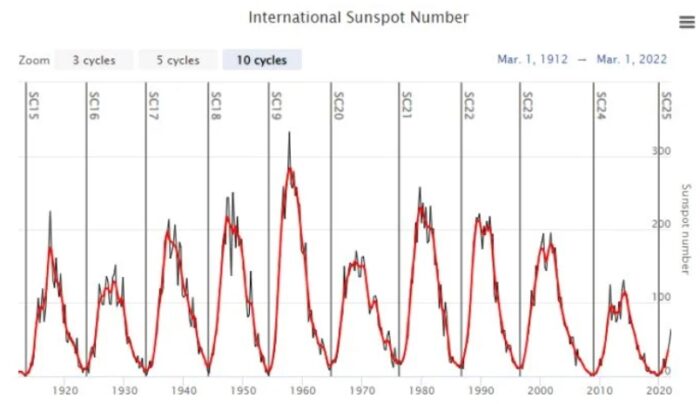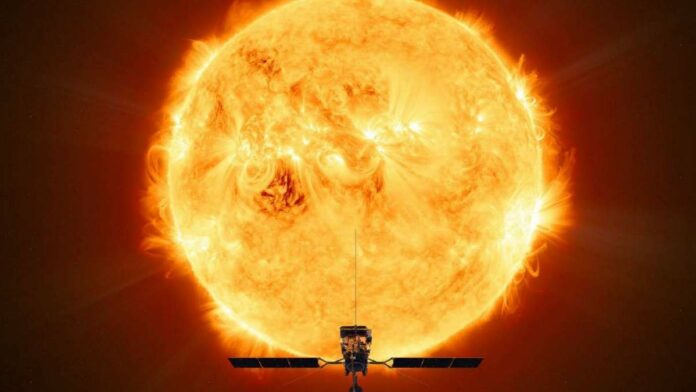© ROOT-NATION.com - Use of content is permitted with a backlink.
Weather forecasts here on Earth are more accurate than ever, but trying to predict the behaviour of our Sun is much more difficult. Illustrative example: according to official forecasts, the current cycle of solar activity should be mild. But the gap between the forecast and what is really happening is quite significant – and it is growing. The activity of sunspots, which is used as a measure of solar activity, is much higher than the predicted values calculated by NOAA, NASA and the International Space Service.
In fact, since September 2020, the number of sunspots has consistently exceeded the forecast level. This may mean that, contrary to forecasts, the Sun is in the midst of an extremely strong cycle of activity.

The sun is a strange and dynamic place, but not always active, with 11-year cycles of activity associated with its magnetic field. These cycles have highs and lows known as the solar maximums and solar minimums, which scientists calculate based on the number of sunspots.
This is because the Sun’s magnetic field controls its activity. Sunspots are temporary areas with strong magnetic fields, and solar flares and coronal mass emissions occur due to the rupture and reconnection of magnetic field lines, often in the locations of these sunspots.

The solar minimum, when the Sun’s magnetic field is weakest and is characterized by minimal sunspot activity, occurs when the Sun’s magnetic poles change places. The last solar minimum occurred in December 2019. At the moment, we are in the solar cycle 25, approaching the solar maximum scheduled for July 2025, the peak period of sunspot activity.
The 24th solar cycle was quite calm compared to solar cycles, with a peak of 114 sunspots (average 179). The solar cycle forecasting team predicted that the 25th cycle from the start of recording will be just as quiet, with a peak of 115 sunspots.

On the contrary, the number of sunspots over the past 18 months has consistently exceeded forecasts. At the time of writing, there are already 61 sunspots on the Sun, and there are more than three years left until the solar maximum.
However, if there’s a stronger solar cycle expected, it could mean something really interesting. In 2014, a team of scientists led by physicist Scott Mackintosh of the US National Center for Atmospheric Research studied long-term trends in the solar cycle and found that the 11-year period is only an average. Some solar cycles are a little longer than 11 years, and some are a little shorter.
They noticed that the solar cycle, which follows a longer one, is likely to be weaker. But a cycle that follows a shorter cycle is likely to be stronger. The 23rd solar cycle was long, which is consistent with the weakness of the 24th solar cycle. But the 24th solar cycle was also short, lasting just under 10 years. This, as Mackintosh and his colleagues predicted in 2020, meant that the 25th solar cycle was likely to be stronger – perhaps one of the strongest in history. And the growing number of sunspots suggests that they may be right.
This means that we can expect quite impressive solar storms, following the eruptions of solar flares and coronal mass emissions into the Sun. When solar particles launched into interplanetary space collide with the Earth’s magnetic field and atmosphere, they can cause disconnection, power system fluctuations, and striking auroras.
You can also help Ukraine fight with Russian occupants via Savelife or via an official page of the National Bank of Ukraine.
Read also:
- Scientists have discovered the most distant galaxy in history
- Unique kinetic cannon from SpinLaunch will help NASA in 2022


